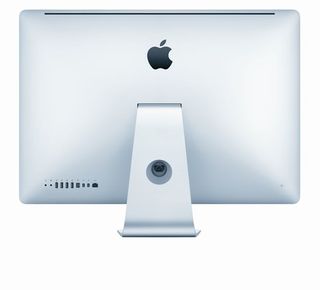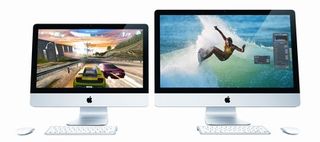Why you can trust TechRadar

Like the rest of the mid-2011 range, this customised top-end 27-inch Apple iMac uses a Sandy Bridge processor, the second generation of Intel's Core-i CPUs.
Sandy Bridge chips, which are based on Intel's 32-nanometer process technology, combine the processor, cache, memory controller and graphics engine on a single chip. As data doesn't have to travel as far, performance and efficiency are increased.
Turbo Boost, a feature introduced with the first Core-i processors, gives the CPU an extra burst of speed at times of high needs, such as when using a processor-intensive application such as Aperture 3 or Final Cut Pro.
It works by automatically shifting or reallocating processor cores and processor graphics resources, tailoring a workload to the task in hand and taking the processor above its core clock speed while power and temperature considerations allow.
This feature has been improved in the Sandy Bridge chips. Turbo Boost 2.0 shifts core frequency in smaller increments than before, allowing the processor to manage performance without sacrificing efficiency. As a result, it activates more often and stays active for longer.
A feature enjoyed by the Core i7 Sandy Bridge processor used in this customised 27-inch 2011 iMac, but not the Core i5s used in the off-the-shelf models, is Hyper Threading.
By allowing two threads to work each of the processor's cores, Hyper Threading effectively doubles the number of jobs it can tackle. As the processor we have here is a quad core, Hyper Threading gives it eight virtual cores, allowing processor-intensive tasks to be spread more evenly.
The 2011 27-inch iMacs have two Thunderbolt ports, replacing the Mini DisplayPort. Thunderbolt combines data transfer and video capabilities, so you can use it to connect a second (and even a third) monitor as well as external storage.

Mini DisplayPort screens plug directly into a Thunderbolt port, but you can also fit DisplayPort, DVI, HDMI or VGA displays by using existing Mini DisplayPort adapters. It also acts as a video-in port, so you can use your 2011 Apple iMac as a display for another device.
At the time of writing, this feature demands a Thunderbolt-to-Thunderbolt connection, so is currently restricted to using the 2011 range of iMacs as a screen for a MacBook Pro. But Apple assures us that third-party manufacturers will be able to make adapters for other video protocols such as Mini DisplayPort or HDMI, which is excellent news.
Being able to plug in a games console or Blu-ray player would make the 27-inch 2011 Apple iMac a great media machine.
As a data transfer solution, Thunderbolt is capable of speeds of up to 10Gbps in both directions, which is 20 faster than USB 2.0 and 12 times quicker than FireWire 800, though connected peripherals might not be capable of using the entire bandwidth.
Like all recent iMacs, such as 2010 top dog the 27-inch SSD, this new model has a built-in webcam. The FaceTime camera used in the last generation has been upgraded to FaceTime HD, boosting the resolution from 640x480 to 720p.
The aspect ratio is now 16:9 – a wider image that makes it easier for groups of people to chat over FaceTime – and it has much better low-light performance than before.
Current page: Apple iMac 27-inch 2011: Specifications
Prev Page Apple iMac 27-inch 2011: Overview Next Page Apple iMac 27-inch 2011: Performance
